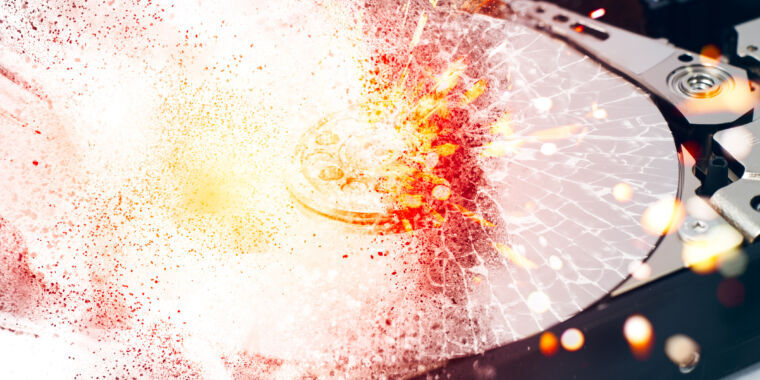My father told me he wanted to make USB flash drives of all the scanned and digitized family photos and other assorted letters and mementos. He planned to distribute them to all family members hoping that at least one set would survive. When I explained that they ought to be recipes to new media every N number of years or risk deteriorating or becoming unreadable (like a floppy disk when you have no floppy drive), he was genuinely shocked. He lost interest in the project that he’d thought was so bullet proof.



Buy Spinrite. It’s not perfect but it’s the best thing available for drive maintenance and recovery. I have used it for over 10 years. If the drive is dying it’ll take forever, but I’ve recovered data that was nearly gone due to sector loss. It goes down to the bit level BTW. Someday Steve will release v7 … someday.
This is the first time I’ve seen anyone else talk about SpinRite, known about it a long time too
If your data is really important, you should send it to a reputable data recovery service. Using the drive any more (even with a tool like SpinRite) risks further damage.
I think you are mistaken and don’t understand how Spinrite works. It reads at the bit level and only reads once at level 1. If the data is going to be lost at the first read then it’ll crash when read by a professional company.
Do you have a source for that? I am unaware of any modern hard drives that support reading individual bits; the minimum unit of data that can be read is generally one sector, or 512 bytes. If the sector fails to be read, the drive will usually attempt to read it several times before giving up and reporting a read error to the PC.
Data recovery companies can remove the platters from a damaged drive and put them in a working drive, as long as the platters are in good condition, preventing further damage. (If the platters themselves are damaged, you’re screwed either way).
This is the best I can find in a pinch. It’s possible it reads at the sector level and repairs at the bit level. It’s been awhile since I’ve been knee deep in Steve’s ass and testimonials. Old Security Now episodes have a lot of info on how it works.
https://www.grc.com/sr/faq.htm
Data recovery companies work the hardware which can be a point of failure. Spinrite tries to recover the data before the hardware fails. The greater density a disk has, the more failures are expected and error correction just assigns bad sectors as they fail. Between that and the OS, my understanding is that the slow degradation of a drive is managed until it can’t be. Even running Spinrite on a new drive is beneficial because new drives come with bad sectors. By assigning them as bad up front you get ahead of bad sectors and even can catch a lemon before it crashes. I’ve recovered unreadable drives with Spinrite. It’s impressive. It doesn’t solve all issues, but it’s really good.
I talk out of my ass at times, and the bit level statement could be one of them. Nevertheless Spinrite is a little known but amazing tool for HDD and SDD maintenance and recovery. Just go hop over to the forums. I used to be a member in them back in the late 2000s. You’ll see. There are deep drive nerds and they know their stuff.